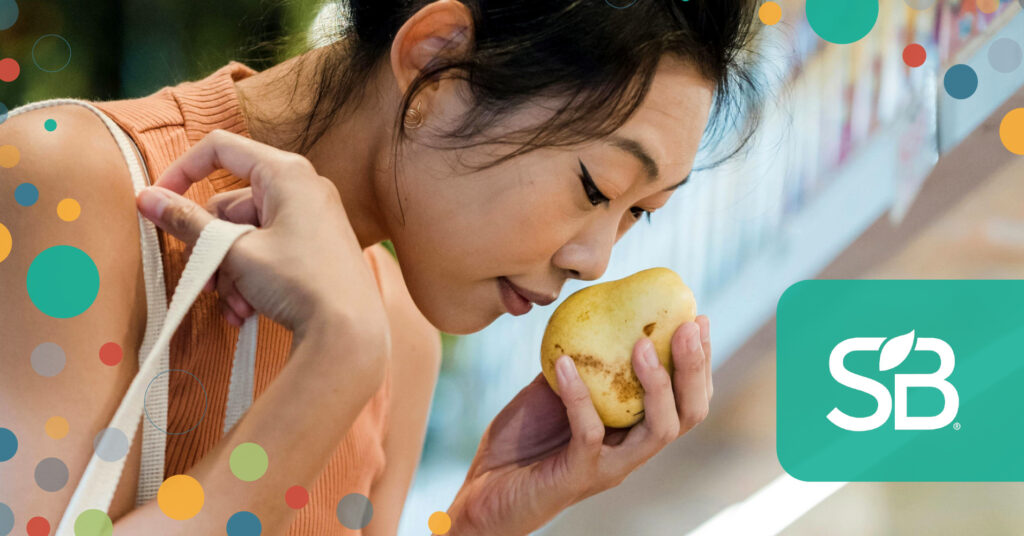‘Quantum Nose’ Could Be Key to Sniffing Out Food Waste
4 min read
The University of Maryland’s NourishNet team has been awarded $5M from the NSF
to develop its comprehensive, technology-based approach to tackling food waste
and insecurity.
A multidisciplinary team led by the University of
Maryland (UMD) has been awarded $5 million from the
National Science Foundation (NSF) to develop
NourishNet: a comprehensive,
technology-based approach to tackling food waste and insecurity featuring
“Quantum Nose” — a portable and user-friendly food-quality sensor that can
detect early-stage food spoilage, and FoodLoops — a real-time app to be
developed to optimize surplus food distribution to food-insecure people.
The NSF Convergence
Accelerator
program advanced the UMD-led NourishNet team to Phase
2 of the
Tackling Food Insecurity track (Track J) — after it won $750k in the
proof-of-concept Phase 1.
Led by Stephanie
Lansing — professor
in UMD’s College of Agriculture and Natural Resources —
the team has brought forward a tech-driven solution that will unite a network of
producers, donors, distributors and those who are hungry to fill food pantries
with fresh produce and reduce food waste.
Launched in 2019, the NSF Convergence Accelerator — a Directorate for
Technology, Innovation and
Partnerships
(TIP) program — builds upon NSF’s investment in basic research and discovery
to accelerate solutions toward societal and economic impact. The program’s
multidisciplinary teams use convergence research fundamentals and innovation
processes to stimulate innovative idea-sharing and development of sustainable
solutions.
“We are so thrilled to receive Phase 2 funding from the Convergence Accelerator
— which gives us the resources to create new connective tissue between
consumers, producers, donors/distributors and institutions,” Lansing
said.
“This project has several ambitious goals; but our main focus is to deploy
NourishNet on a national scale to increase food accessibility for all
populations, and reduce spoilage to build a more sustainable and responsible
food system.”
Food waste is a well-documented problem around the world, but Feeding
America estimates
38 percent of all food in the US alone goes unsold or uneaten —
translating to 149 billion meals heading to the landfill each year; and the
USDA estimates 31 percent of that annual food
loss is at the retail and consumer levels.
A number of platforms — including
Flashfood
and Too Good to
Go
— are working to divert some of the many tons of still-perfectly good food
deemed unsellable from the broader distribution system to willing consumers,
with varying degrees of success. But more, scalable solutions are needed to
enable a holistic approach to tackling the issue.
In Phase 2 of the Convergence Accelerator, the NourishNet team plans to meet
several key objectives — including direct sale and distribution of the toolbox,
complete financial marketing and business development, and expanding consumer
education within food pantries and national universities.
The first step is the Quantum Nose — an electronic sensor developed by Cheng
Gong, a UMD assistant
professor of electrical and computer engineering and a Quantum Technology
Center fellow, that can detect the spoilage rate of perishable food (It was
recognized
in 2022 as UMD’s Invention of the Year).
“These sensors are built based on atomically thin quantum materials, which are
extremely sensitive to miniscule amount of influencing factors — including the
gas molecules nearby emitted by spoiled food,” Gong
explained.
“Based on such information, we can evaluate the life span and freshness of
food.”
The second step is building the FoodLoops app and platform — which will focus on
engaging consumers, recovering and redistributing surplus food, and providing
greenhouse gas emission data to government and institutions to allow for
data-driven decision-making. For example, it will connect small farmers within
the food ecosystem with nonprofits and their clients; people who need food can
see a map with the pantries where they can search for produce they need. If
those pantries don’t carry those fruits or vegetables, they can be added to a
wish list and the food pantry will be notified.
“Working on projects like this is rewarding, because of the direct impact that
we can have in food-insecure communities that are oftentimes left out of
decisions made around food distribution; as well as in supporting decision
makers understand better the complexities around food access, food distribution
and food recovery,” said Dr. Vanessa
Frias-Martinez, an associate professor of
information studies with an appointment in the University of Maryland
Institute for Advanced Computer Studies. She will work with food-recovery
software company Chowmatch to develop and
test the FoodLoops app developed by the NourishNet team.
Finally, in cases where the condition of the food doesn’t allow it to be
distributed and eaten, composting and anaerobic-digestion
systems
will convert it into fertilizer and renewable energy. At the end of the process,
app users can view how much greenhouse gas they kept out of the atmosphere
through their decisions to donate recoverable food, or to send it for composting
or digestion.
The three-year project’s initial area of focus will be English- and
Spanish-speaking food-insecure individuals in Prince George’s County,
Maryland — with the help of NourishNet’s first partner, the Prince George’s
County Food Equity Council. The team will bring on
additional new partners the LindaBen Foundation, SCS Engineers and
Well Said Media.
“A collaborative approach between academic researchers, industry, government,
nonprofits and other communities is important to optimize the production of food
and connections between farmers and consumers, researchers and other
stakeholders,” said Douglas
Maughan, head of the NSF
Convergence Accelerator program. “A lot of great work was accomplished by all
teams in Phase 1, but there is still more to be done. The teams selected for
Phase 2 are expected to build innovative, tangible solutions and strong
partnerships to address food scarcity, irrigation issues, supply chain
inequalities and inefficiencies, and more.”





